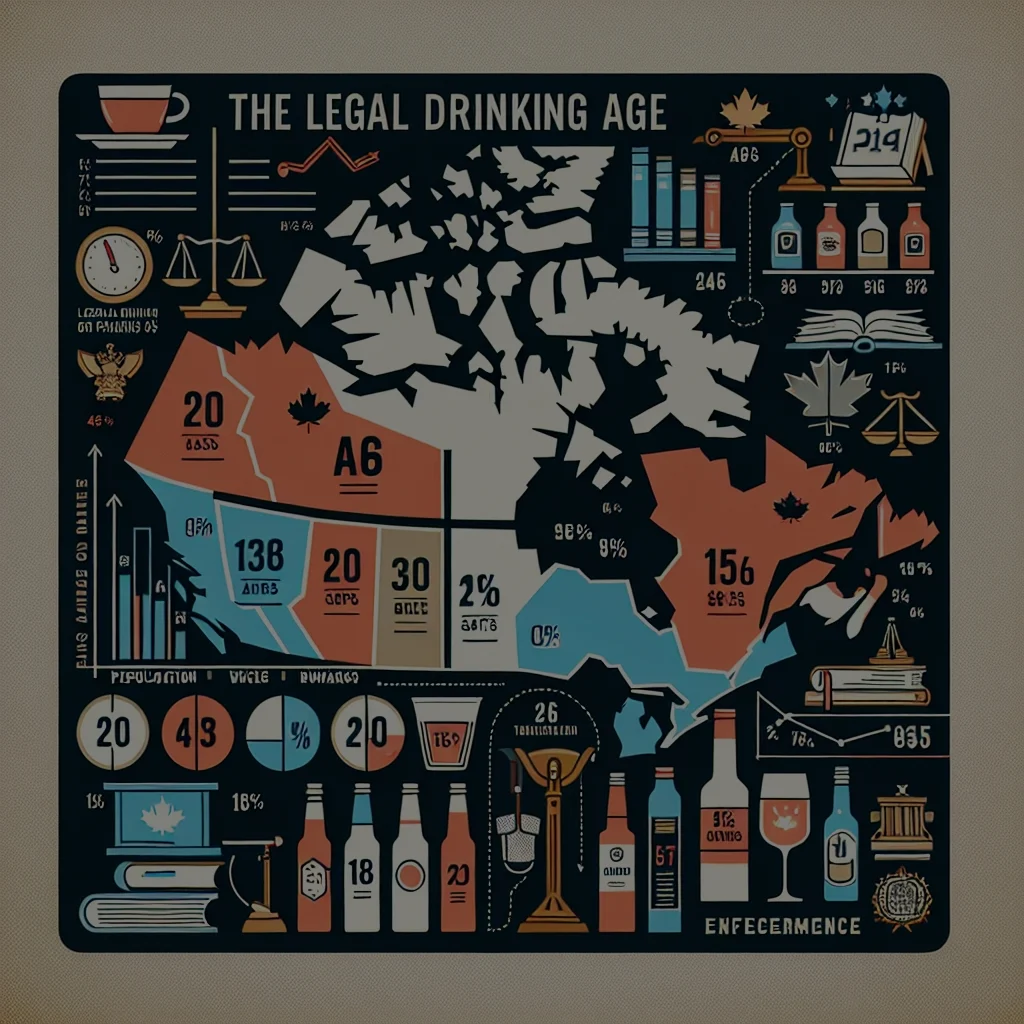Understanding the legal drinking age in Canada is essential for both residents and visitors alike. With its diverse population and provincial regulations, Canada presents a complex landscape of alcohol laws. While many countries have a uniform legal drinking age, Canada’s system is decentralized, leading to variations that reflect the unique cultural and social attitudes toward alcohol in different regions. This article aims to illuminate the key facts and insights surrounding Canada’s legal drinking age and the implications it has for health, safety, and culture.
The Legal Drinking Age in Canada: An Overview
In Canada, the legal drinking age is not a federally mandated standard but is determined by each province and territory. This decentralized approach means that the legal age can range from 18 to 19 years old, depending on the location. For instance, Alberta, Manitoba, and Quebec allow individuals to purchase and consume alcohol at the age of 18, while most other provinces, including British Columbia, Ontario, and Nova Scotia, set the age at 19. This discrepancy often leads to confusion, particularly among tourists and young Canadians traveling across borders.
The regulations governing alcohol consumption are not merely about age; they encompass a variety of laws regarding the sale, distribution, and promotion of alcoholic beverages. Each province has its own liquor control authority that oversees these regulations. They establish rules concerning where alcohol can be sold and the hours of sale, which can differ significantly from one province to another. Such regulations aim to create a controlled environment for alcohol consumption, limiting its potential negative impacts on society.
Understanding the legal drinking age in Canada requires familiarity with these provincial variations and the broader context surrounding alcohol consumption. The differences reflect not only the demographic needs of each province but also their cultural attitudes toward drinking. This system allows individual provinces to tailor their regulations to their unique social landscapes, thus shaping the drinking culture at a local level.
Provincial Variations: Drinking Age Across Canada
The variations in legal drinking ages across Canada often mirror cultural attitudes and historical contexts of each province. For example, Quebec’s relatively permissive stance on alcohol consumption, allowing drinking at 18, is reflective of its European-influenced culture, where wine and social drinking are more ingrained in daily life. In contrast, provinces that enforce a higher minimum age, such as Ontario and British Columbia, often cite a more conservative approach to alcohol in their social policies.
Such differences lead to interesting phenomena, including "border hopping." Young adults from provinces with a higher drinking age may travel to nearby provinces with a lower age to access alcohol more freely. This behavior raises questions about the effectiveness of age restrictions and whether they truly deter underage drinking. Some experts argue that such laws can create a culture of secrecy and rebellion among youth, potentially leading to riskier drinking behaviors when they do consume alcohol.
Moreover, these provincial regulations can influence tourism and local economies significantly. Regions with a lower drinking age may attract younger tourists looking to enjoy nightlife and social experiences, while those with stricter laws may see a differing demographic in their visitors. Understanding these dynamics is crucial for businesses and policymakers as they navigate the complexities of alcohol legislation in a diverse country.
Health and Safety Considerations Behind Drinking Laws
Health and safety concerns are paramount in the discussion surrounding Canada’s legal drinking age. Research indicates a direct correlation between the minimum legal drinking age and the rates of alcohol-related accidents, injuries, and deaths among young people. Provinces with a higher legal drinking age often report lower incidences of alcohol-related harm, prompting some experts to advocate for a uniform national drinking age to protect youth across the country.
Furthermore, the legal drinking age serves as a potential deterrent against underage drinking. Studies suggest that young people are more likely to engage in risky drinking behaviors when they have unregulated access to alcohol. By enforcing age restrictions, provinces aim to minimize the likelihood of alcohol misuse, promoting healthier lifestyle choices among adolescents. This perspective echoes a broader public health strategy focused on reducing harm and fostering responsible consumption.
However, the effectiveness of drinking age laws is debated. Critics argue that simply raising the legal age does not address the root causes of underage drinking or the social pressures that encourage it. Instead, a multi-faceted approach that includes education, community engagement, and culturally sensitive policies may be more effective in fostering a responsible drinking culture and ensuring the safety of young people.
Cultural Perspectives on Alcohol Consumption in Canada
Alcohol consumption in Canada is deeply intertwined with cultural practices and social norms that vary widely across provinces. For many Canadians, alcohol is a central element of social gatherings, celebrations, and traditional ceremonies. However, the cultural landscape is not uniform; different regions exhibit distinct attitudes toward drinking. For instance, in coastal provinces like Newfoundland and Labrador, beer and spirits are often part of social rituals, while more northern regions may have different traditions and norms surrounding alcohol use.
In Indigenous communities, perspectives on alcohol can be particularly nuanced, shaped by historical trauma and contemporary challenges related to substance use. Many Indigenous leaders advocate for a culturally relevant approach to alcohol education and support, emphasizing the importance of community-based solutions that respect traditional practices and values. This highlights the need for sensitivity and understanding when discussing alcohol laws that affect diverse populations across Canada.
The cultural framing of alcohol consumption also affects public perceptions of the legal drinking age. In provinces where drinking is seen as a rite of passage, there may be more pushback against stricter laws, while in others, there is a stronger consensus on protecting youth from the harms of alcohol. This cultural context plays a crucial role in shaping policy decisions, underscoring the importance of considering local values and attitudes when discussing legal drinking age regulations.
Understanding Canada’s legal drinking age requires an appreciation of the intricate interplay between provincial laws, health and safety considerations, and cultural attitudes toward alcohol. Variations across provinces reflect not only historical and social contexts but also the ongoing dialogue about responsible drinking and the protection of youth. As Canada continues to evolve in its approach to alcohol legislation, ongoing discussions will be vital in promoting a balanced perspective that respects both individual rights and collective health.
Navigating the Appeal Process: A Guide for Canadian CourtsUnderstanding Impaired Driving Penalties Across CanadaUnderstanding Your Rights When Arrested in CanadaRelevant LinkRelevant LinkRelevant LinkNavigating the Appeal Process: A Guide for Canadian CourtsUnderstanding Impaired Driving Penalties Across CanadaUnderstanding Your Rights When Arrested in CanadaRelevant LinkRelevant LinkRelevant Link


